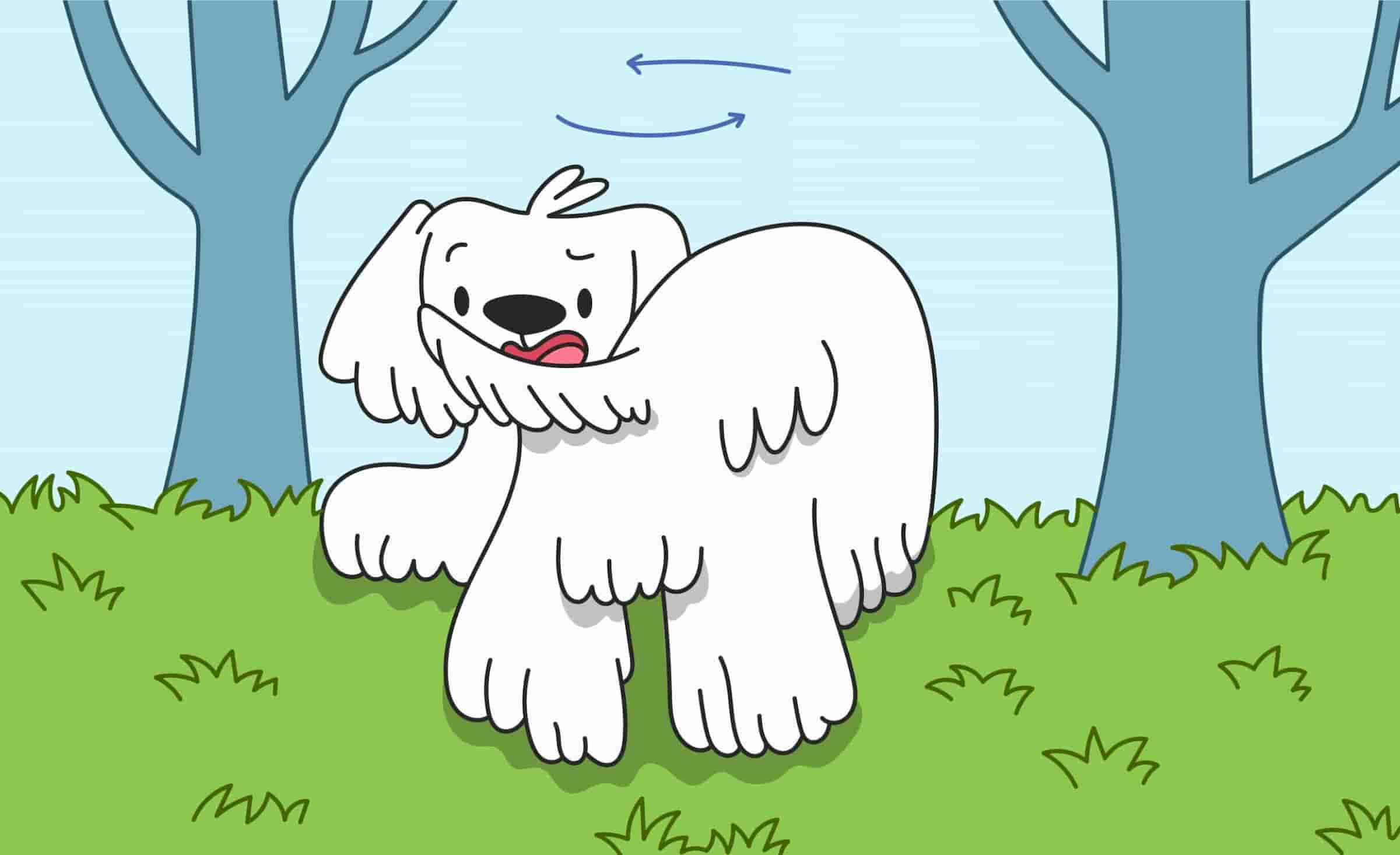Have you ever observed dogs chasing their tails? If you're a dog owner, it’s safe to say that you probably have on more than one occasion, and you may have asked yourself whilst amused “Why do dogs chase their tails?” Yes, this kind of behavior may be harmless if you only see them do it once in a while. If it happens often, however, it might be a symptom of an underlying condition that needs to be addressed.
Possible Reasons Why Dogs Chase Their Tails
Let us take a closer look at the possible reasons for tail chasing in dogs.
Puppy Curiosity
Curious about the world around them, puppies are excited about almost everything, including their tails. They are eager to learn new things about themselves while becoming aware of the different parts of their body.
Add to that the fact that puppies are usually playful in nature, so when they first become aware of their tail, they may consider it as a toy that they can chase on end. This behavior during puppyhood is usually just a phase, so there is no need to worry.
Seeking Attention
Tail chasing may also be your dog’s way of seeking attention. Many paw parents become amused whenever their dog is chasing their tail, so some dogs will continue to exhibit this behavior whenever they want attention from their owners.
For some dogs, a reaction from you serves as positive reinforcement, whether you respond positively or negatively. This shows how important it is to set aside some time to play and interact with your dog for them not to feel ignored.
One way to stop tail chasing when done to seek attention is to not react when your dog is chasing their tail and praise them when they stop doing it. Meanwhile, do remember that it is essential to spend enough quality time with your dog for them to feel seen, loved, and appreciated.
Boredom
Dogs can get bored when they are left alone for long periods of time, lacking both physical as well as mental stimulation. So, what do dogs do to channel their energy during these times? Chasing their tail could be one, as it provides them with a degree of stimulation and amusement that they crave for.
Help your dog release their energy by adding more physical and mental activities to their daily routine. As much as possible, allot some time to walk your dog every day. Activities such as playing fetch as well as puzzles will help provide them with mental stimulation as well.
Compulsive Behavior
Like obsessive-compulsive disorder (OCD) in humans, some dogs may also suffer from stereotypy or canine compulsive disorder that may be expressed in ways such as tail chasing. For example, when a dog is nervous, their reaction might be to chase their tails as a coping mechanism.
It may also be that a dog has started chasing and biting their tail after an injury to soothe the pain, but she may have continued to do it even after the injury has been healed already. On the other hand, some injuries to the tail may actually not heal because the dog has developed a compulsive behavior and keeps on chewing on it.
There are also some dogs who chase their tails whenever there are visitors or when they see insects or birds in the garden, a behavior manifested because of their excitement. These are just some of the possible scenarios and triggers of compulsive behavior in dogs. Dogs with stereotypy or canine compulsive disorder tend to chase and bite on their tails frequently, and this needs to be addressed so as not to lead to further problems.
It takes effort for both the dog and their owner to successfully address the compulsive behavior but patience and support on the part of paw parents will go a long way. It would be beneficial to first identify the triggers of tail chasing in your dog by carefully observing them.
After identifying these triggers, you can then distract them with other activities whenever the triggers are present before they start to chase their tails. Upon seeking the guidance of your veterinarian or canine behaviorist, you may be asked to try certain behavior modification techniques (sometimes together with medications) to help prevent your dog from chasing and biting their tail incessantly. In addition to this, simultaneous treatment may also be needed to treat the wound in your dog’s tail.
Autism
While studies are not yet conclusive in terms of diagnosing autism in dogs, veterinarians have discussed the prevalence of symptoms similar to autism in dogs as early as the 1960s. A study presented by Dr. Nicholas Dodman in 2015 provides credible evidence of the possibility of autism in dogs. In this study, 333 English Bull Terriers were observed. Of the 333, 145 chased their tails while the rest didn’t.
The findings of the study show that the majority of those who chased their tails have exhibited trance-like, episodic, as well as explosive and aggressive behaviors. These behaviors are similar to the symptoms of autism in humans. Therefore, based on the study, there might be a correlation between tail chasing and autism in dogs.
Read more about autism in dogs.
Age
As a result of old age, the mental awareness of some dogs starts to decrease. This may result in certain behaviors such as biting and chewing on their tails. This behavior is a sign of a cognitive disorder. In some cases, your dog may need medications for behavior modification as prescribed by your veterinarian. Feel free to use Online Vet to get even more recommendations on caring about your dog properly.
Medical Conditions
If you notice that your dog chases their tail often, it is best to consult with your vet first to rule out any medical conditions that may be causing the behavior. For example, if your dog’s tail is injured, they might try to soothe the pain by chasing or biting their tails.
Another possible reason is that your dog might have intestinal parasites, fleas, or food allergies. Tail chasing may also be due to neurological problems or when anal glands are impacted. It can also be a signal of muscle or orthopedic pain.
Why do dogs bite their tails?
If your dog is biting her tail, there are several possible reasons why. And if you’ve seen your dog exhibit this behavior, you’ve probably wondered “Why is my dog biting his tail?”
Parasites
As a dog owner, you’re most likely familiar with fleas and ticks. And when your dog has it, they may also make their way to your dog’s tail. Meanwhile, your dog might also be allergic to the saliva of these ticks and fleas.
If your dog has been bitten, she might constantly bite and chew on her tail for relief. Thankfully, there are a lot of treatments that you can choose from to keep fleas and ticks away.
Another possible reason for a dog biting his tail is the presence of tapeworms. Because there is discomfort in the area around your dog’s anus, it may trigger them to bite and chew the base of their tail.
Allergies
Dermatitis, skin inflammation, and environmental allergies may also cause your dog to chase and chew on the tail. Whatever the allergy, most severe cases usually happen when your dog is between 3 mos. to 6 years of age.
Anxiety and Stress
When dogs are anxious and stressed, they may exhibit self-destructive behaviors such as biting their tails. In this case as well as in other behavioral problems in dogs, it is important to provide your dog with the proper care, attention, and stimulation that they need.
You may consult with your veterinarian for treatment options which may also include medications if necessary.
Was this article helpful?
Help us make our articles even better










